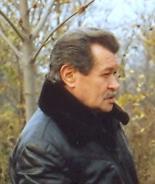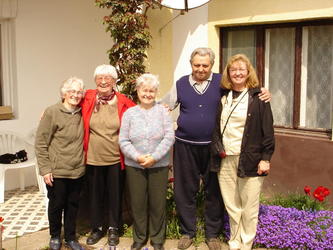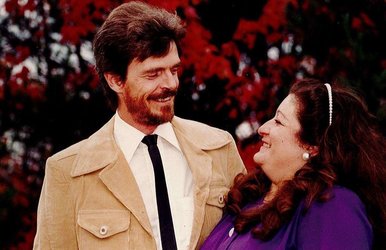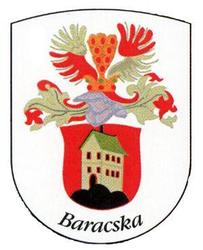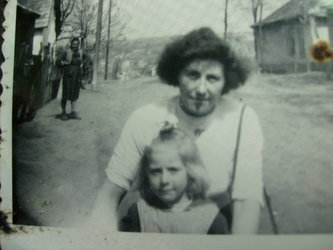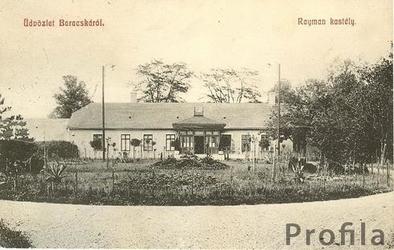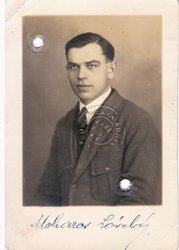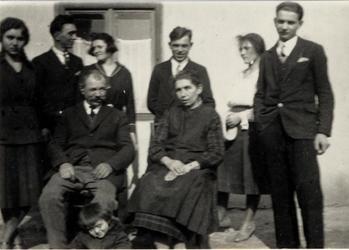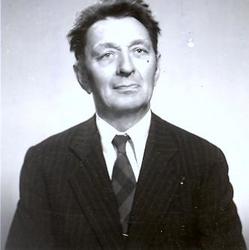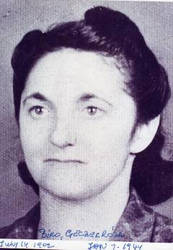| About The Moharos, Fejes Family
Please sign in to see more. Szivesen fogadunk uj informaciot.
--------------------------------
A Moharos Csalad legelso ose az Moharos Gergely, sz. 1685-ben, vagy Sarkeresztesen vagy Sarkereszturon. 1685 elotti iratok eltuntek a Torok elnyomas alatt, akik kiraboltak es leegettek a templomokat, eluztek a nepeket a falvakbol, vagy teljesen ki irtottak egesz falvakat mielott leegettek. 1685 utan, a Moharos Gergely leszarmazottjai elterjedtek Magyarorszag nyugati reszen, Baracskan, Gardonyon, Veszpremben, Szekesferervaron, Budapesten, Kanadaban. A Magyarorszagi Nemzeti leveltarban sok adat van, a Dr. Moharos Eva segitsegevel azt kibanyaztunk. A Szekesfehervari Leveltarban szamtalan templomi adat van, amit a Tunyogi Denes segitsegevel szedtuk ki. Szamtalan Moharos kivandorolt az USA-ba 1893-tol 1950 evek kozott. Az USA Szenzus mutatja a neveket, es hogy honnan valok. Hanem eddig nem tudtuk bebizonyitani hogy rokonok vagyunk azokkal.
Akinek van csaladi tortenete, szivesen kuldje el a Moharos Katinak (Kathy Stivin) email cime: kstivin@telus.net
We welcome all new input and suggestions.
-----------------------------------------
Moharos Gergely is the oldest known documented ancestor of the family, born in 1685, in the village of Sarkeresztes or Sarkereszturon, Hungary. Prior to this date, most records in Hungary have been burnt in the churches that were looted and burned during the Turkish invasion of 180 years prior to the birth of Moharos Gergely. Many villages were eradicated from the face of this earth, every person killed, homes and churces burned to the ground (along with all records of birth,
marriages and deaths). Gergely's descendents spread across the western hills of Hungary, from Baracska, Gardony, Veszprem, Szekesfervar, Budapest and to Canada. Data from the Hungarian National Archives have been mined by Dr. Eva Moharos, an expert in the subject. Mr. Tunyogi Denes was instrumental in exploring the church records (births, deaths, marriages) contained in the Szekesfehervari Archives.
There are also records of many Moharos immigrating to the USA from 1893 to about 1950. The US immigration records at Ellis Island, and the US Census shows their names, village of origin, birthdates, professions. Many have descendents, living today in the USA, however, we were not able to prove a direct bloodline, nor were we able to get responses from those we contacted. If you have information to contribute, suggestions for changes, improvements, please send them to Kathy Moharos,(Kathy Stivin), email address: kstivin@telus.net
Moharos Nev Eredete / The origins of the name "Moharos" ------------------------------------------------------
Ez jott a Gábor Garab-tol, aki garabga@gmail.com datum 2016.Jan.5-en. ======================================================================
Nagy valószínűséggel a moha szavunk található a MOHAROS névben. A közszó délszláv eredetű, első írásos említése már a XIII. század közepi, de a névadás már a magyar nyelvben történt meg. A mohar változatot sem a TESz, sem aZaicz nem említi, emiatt a feltételes mód. A mohar > Moharos névadáshoz analógiás példa lehet a juhar/ihar > Iharos.
A Wikipédia 'Régi magyar személynevek' cikkében szerepel a Mohar név, mint növénynév eredetű. A forrásánálKálmán Béla: A nevek világa műre hivatkozik. Ebben az adott forráshelynél Kálmán Béla Pais Dezső és Berrár Jolán műveire hivatkozik. (Pais Dezső: Régi személyneveink jelentéstana MNy XVII - XVIII - Berrár Jolán: Női neveink 1400-ig MNyTK. 80. sz. Bp 1952.) Az 1715-ös országos összeírásban Sárkeresztúr, Sárkeresztes (Fejér) és Hedrehely (Somogy) településeken írtak össze Moharos nevű személyeket.
Az RMCsSz szerint a Moharos vagy Muharos név a mohar/muhar takarmánynövény-féleségből ered (http://www.kislexikon.hu/muhar.html).
Ennek ellenére érdekes módon a lehetséges motivációnál kérdőjel szerepel, pedig az Árpás, Borsós, Kenderes, Búzás stb. mintájára talán ez is lehet a növényhez kapcsolódó foglalkozásnév. Vagyis valaki, aki mohart termesztett, moharral kereskedett. Kérdés persze, hogy akkor miért csak ilyen szűk körben terjedt el a név.
Másfelől, a muhar fajtái között gyomnövény is van, tehát az is lehet, hogy ragadványnévként keletkezett, amikor valaki nem művelte rendesen a földjét vagy a kertjét, és azt felverte a muhar. Vö. Labodás, Parajos, Perjés, Konkolyos családnevek.
Végül pedig az is lehet, hogy képzőtlen lakosnévként keletkezett, és valamelyik település Moharos nevű részén lakó illetőt jelölt. Persze ennek alátámasztására előbb kellene találni egy ilyen nevű (egykori?) településrészt. Ráadásul a Moharosi/Muharosi név sem adatolható tudtommal, pedg várható lenne, hogy egy ilyen nevű településrész esetén a képzővel ellátott lakosnév is megjelenjen.
Baracska Története (Wikipedia-bol, translated by Kathy Stivin / Moharos Kati) ------------------
Baracska was known to be populated in Roman times, on the north side they found the foundations of several Roman structures. Originally, it was settled by an ancient magyar tribe known
as "Boyta kun" or "Kabar" and its leader's descendents. Its name shows up in 1212, mentioned as "Boroksa" in legal deeds, and it already had a church. There was a Monastery named Baracska Nation. In 1212, son of Baran, named Ipolit, established his own church (in latin: eccl-e sue, quam in pr-o nomine Boroksa construxit in honore …) who gave his estate, all the land, his servants and beasts, and all his silver including three ornamental silver drinking vessels, 7 M (?) in weight to the Monastery. After the tatar invasion, this nation is never mentioned again in historical or church documents.
Around 1289, there are law suits documented between residents of Baracska, sons of Pál on one side, and Kartali Jaak and Berki Tamás on the other side of the legal case.
In the middle ages, the village was the estate of several noblemen, and after the Turkish invasion, the village became a large 'puszta' meaning un-inhabited but farmed land.
An author named Fényes Elek, writes about Baracska in the Hungarian Geographic Reference (1851): "Baracska, and its fields, located in Szekes-Feher county, between Martonvasar and Velencze Lake, on
the Budai road, has 379 Catholic, 1018 Reformed, 12 Evangelical, 41 Jewish residents. Excellent farming land, including pastures of F. u. Pázmándy, Szűcs, Roboz, Kenessy, Hollósy, Kazay, Domokos, s m t." (not sure what F.u. and s.m.t. stand for in the Hungarian text - the editor.)
In May 1850, poet and national hero Vörösmarty Mihály purchased a home and surrounding lands in the nearby estate of Szentivánpuszta. He lived here until 1853, composing the famous poem "Foreword", among others.
The local economy includes a national prison, in existence since 1945, that provides employment to many local residents. (Anna-Mayor prison).
|

